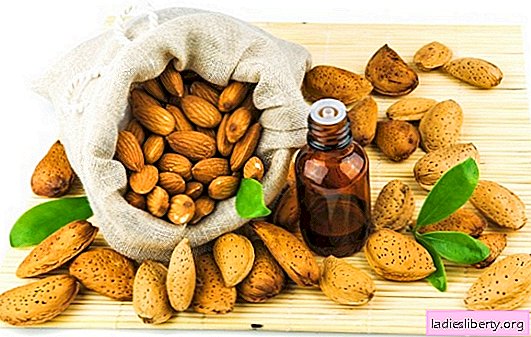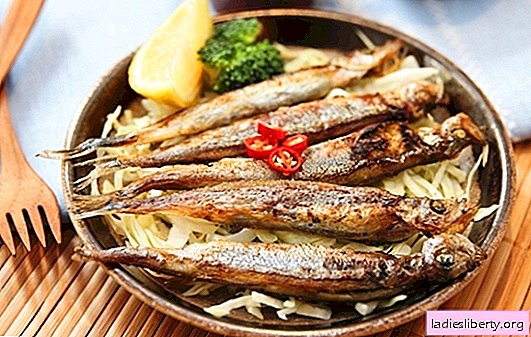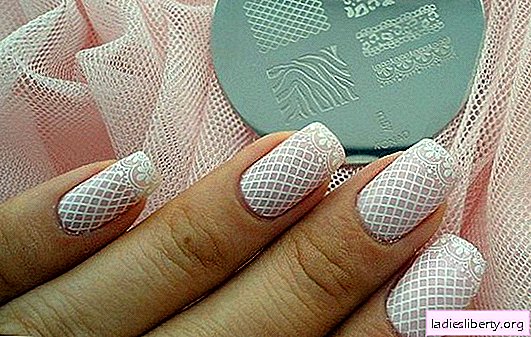
Growing Schisandra chinensis is a pleasure. After all, this decorative liana can decorate any corner of the garden.
It is used to create hedges, decorate arbors and decorate arches.
Decorative liana is preserved throughout the season, which gives the landscape a special flavor.
From early spring, lemongrass is covered with lush green foliage, later flowering begins.
During this period, white flowers adorn the shrub. The flowers are replaced by bright red fruits of lemongrass, which look very beautiful against the background of already yellow foliage.

Chinese schisandra is famous not only for its beauty, all parts of the plant are used in folk medicine. Drinks from it give strength, fight depression, drowsiness and overwork. So growing lemongrass is a "practical beauty."
Cultivation of Schisandra chinensis: all about planting, soil and timing (photo)
It all starts with planting a vine and creating a support. You need to grow an elegant bush on a solid fence, which can serve as: a fence, an arch, an arbor.

Choosing a place to land
The place for the creeper should be warm, protected from cold winds. It is best to give preference to the western or eastern side of the site, where the plant can be in partial shade. The bright scorching sun will only harm the plant, and even in the full shadow of beautiful fruits you can’t wait.
Soil for lemongrass
The composition of the soil is important when growing lemongrass. It is necessary to create all conditions as close as possible to natural ones. For planting a seedling you need to use light earth, best forest. Heavy loams are not suitable for planting lemongrass. Such land needs to be prepared in advance.
Planting a seedling
The pit for planting should be spacious so that the root system is freely located in it. As a rule, landing pits are prepared in the following sizes: 50 cm in diameter and 60 cm in depth. At the bottom of the pit, a drainage layer is necessarily laid, which will not only ensure the outflow of excess water, but also help the horses to bond well with the soil, which is important when growing vines.
To fill the pit, I use fertilized soil, adding sand, humus, compost, ash and superphosphate to it. After planting, the soil must be well compacted, watered and mulched. Mulch can be sawdust, peat, fallen leaves or humus.
When planting a seedling, you need to monitor the level of the root neck, it should be flush with the ground. Deepening of the root neck is unacceptable.
When to plant a seedling
The best time for planting a seedling is spring, the end of April - the beginning of May. In the southern regions of the country, lemongrass can be planted in the fall, in October. Seedlings should be strong, with a well-developed root system. As a rule, 2-3 year old vines are chosen for planting. It is in such a bush, despite its small growth, that its roots are well developed. The distance between plants should be at least 1 meter, otherwise adult vines will drown each other.
Chinese Schisandra care: watering, top dressing, pruning (photo)
Decorative liana very quickly takes root in a new place, caring for lemongrass does not cause much trouble.
Important! In the first year, the plant must be shaded from direct sunlight.
Throughout the entire growth period, the shrub needs watering, weeding, top dressing and spraying.
Watering a plant
This vine belongs to tropical plants, so growing it without regular watering and spraying is difficult. On hot days, the crown must be irrigated with water. Do this in the evening so that young leaves do not suffer from burns.
An adult plant needs good watering. For this, up to 6 buckets of water are consumed per vine. So that the soil retains moisture well and remains loose longer, it must be mulched.
Until the age of three, seedlings are grown without fertilizing. Further, the regular application of fertilizers increases the decorative effect of creepers, the leaves acquire a more beautiful and healthy appearance.
Schisandra chinensis is fed twice a season:
• in the spring;
• in the fall.
Spring dressing begins from the moment of vigorous growth of the vine, as a rule, from April. During this period, nitrogen-containing fertilizers are used. The earth around the bush is well loosened and granules of saltpeter are closed. Water the plant well. Next, every month, the vine is watered with organic. To do this, use a solution of chicken manure or manure.
Important! As fertilizer, you can mulch the soil around the lemongrass with compost.
Adult vines, which have already been fruiting, are fed with nitrophos in the spring.
Autumn fertilizers are used when the plant drops its leaves. The soil around the vines is loosened to a depth of about 10 cm, bringing 100 g of ash and 20 g of superphosphate under each bush.
Schisandra pruning
After three years of growing, the plant begins to grow rapidly, and it needs the right pruning. Spring pruning contributes to good fruiting. It must be carried out strictly in early March, while the plant has not yet begun sap flow. If you tighten with the term of pruning, then you can destroy the whole bush. During this period, all shoots are shortened.

In autumn, the plant is pruned only after all leaves have fallen. Up to 5 developed shoots are left on the vine, all the rest are cut to the root. Lateral branches bark up to 10 buds. Such radical pruning will help keep the plant healthy.
In addition to the schematic scraps, the liana also needs sanitary cleaning. Spend it in the summer, as the bush grows. All old, dry and broken branches are cut. With this cleaning, you need to remove all root shoots.
Important! After 15 years of growing, you need to conduct a rejuvenating pruning of vines. To do this, the thawed branches are cut out, replacing them with young vines from the shoots.
Growing lemongrass from seeds (photo)
Lemongrass can be propagated by root shoots and seeds. Seed propagation is a very exciting process. But there are some rules, compliance with which will allow you to grow a good seedling.
1. Seeds must be fresh. After 6 months, they lose their germination.
2. Be sure to stratify the seeds.
3. Seeds are planted immediately in the garden, where they will grow during the first three years.
4. During the entire preparation phase, the seeds should be moist.
5. Seedling time is in early April. The first shoots may appear after 2.5 months.
6. The seed placement depth is about 1-1.5 cm.
7. The first year the plants need good care and watering. The soil is constantly loosened and weeds are removed, seedlings are protected from the wind.
8. In the first year, seedlings reach a height of 5-7 cm. In the second year, the root system and the vine grow. At the age of three, plants should have a height of up to 50 cm, only then they are planted in a permanent place.

Preparing for the winter
Adult plants winter well without shelter. Young creepers need reliable protection against frost. For this, plants are spudded with earth, fallen leaves.
Lemongrass is grown only on a trellis, which increases the illumination of the bush and its fruiting. For the winter, the vines are not untied from the hedge, but left.
Important! The danger to the plant is not the frosts themselves, but spring frosts. Therefore, in the spring there is no need to rush to remove the shelter from young vines.
Harvesting Schisandra fruits
Schizandra gives the first fruits at the age of 6 years, i.e. 3 years after planting. The peak yield occurs in the sixth year of cultivation.
Harvesting of fruits begins as soon as the clusters become bright red and soft. Berries are practically not stored, they need to be processed on the day of collection.











